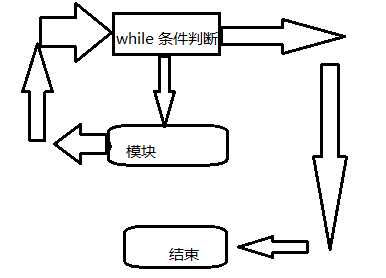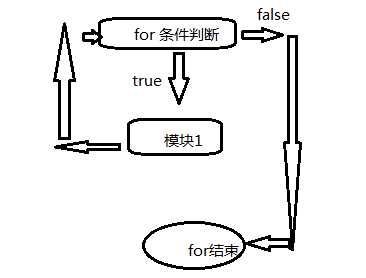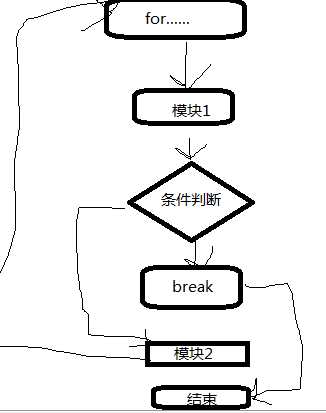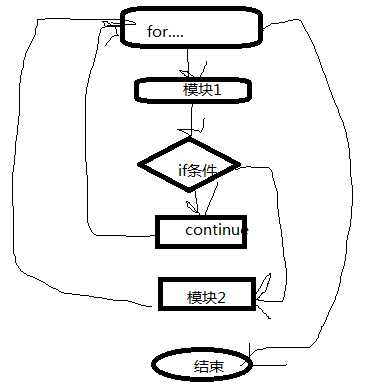基础二
Posted cui00
tags:
篇首语:本文由小常识网(cha138.com)小编为大家整理,主要介绍了基础二相关的知识,希望对你有一定的参考价值。
一、
1.while循环语句的用法
while 条件:
子代模块
2.while语法说明
函数名为while循环判断条件,当值为True时,继续执行子代码;当值为False时,终止循环。

3.嵌套
a,b=0,2
while a<=0:
while a<b:
print("%s"%((a+1)*b))
b-=1
a+=1
二、for循环语句
1.for循环基本用法
for i in range:
子代模块1
else:
子代模块2
2.for语句基本语法
i接收range集合中获取的的成员元素,循环一次接收一次。else为当for循环结束时,在执行对应子代模块2。

3.循环控制语句
(1)break
当while或者for循环过程所产生的的操作已经满足业务要求时,可以通过break语句立即停止并跳出循环,避免过度循环次数发生,以提高处理效率。

(2)continue
当满足指定条件时,continue使循环到开始处,继续循环,而忽略continue语句后的执行代码行。

三、复杂条件及处理1.成员运算符in,not i2.身份运算is,is not
3.运算符优先级
1
**
指数
2
~、+、-
按位翻转、正数、负数
3
*、/、%、//
乘、除、取模、取整
4
+、-
加法、减法
5
>>、<<
右移、左移
6
&
位于(AND)运算符
7
^|
8 ==、!=、<、>、>=、<= 比较运算符
9 ==、%=、/=、//=、-=、*=、**= 赋值运算符
10 is、is not 身份运算符
11 in、 not in 成员运算符
12 not、or、and 逻辑运算符
一、列表
1.定义:[],是可变的序列,也是可以存储各种数据类型的集合。用于(,)分隔。
2.基本操作:
append 增加元素
insert 在指定下标下增加元素
clear 清除
copy 拷贝
count 统计数量
extend 合并两个列表
index 返回指定元素下标
pop 删除指定下标元素
remove 删除指定下标元素
reverse 反转列表元素
sort 对列表元素进行排序
例题:
1.计算鱼的总数和钱数,打印表格
fish_record=[‘1月1日‘,‘鲫鱼‘,18,10.5,‘1月1日‘,‘鲤鱼‘,8,6.2,‘1月1日‘,‘鲢鱼‘,7,4.7,‘1月2日‘,‘草鱼‘,2,7.2,‘1月2日‘,‘鲫鱼‘,3,12,‘1月2日‘,‘黑鱼‘,6,15,‘1月3日‘,‘乌龟‘,1,71,‘1月3日‘,‘鲫鱼‘,1,9.8]
num=0
price=0
i=0
while i<len(fish_record):
num=num+fish_record[i+2]
price=price+fish_record[i+2]*fish_record[i+3]
print(‘%s,%s,%d,%d‘%(fish_record[i],fish_record[i+1],fish_record[i+2],fish_record[i+3]))
i+=4
print(‘总数%d,总资金%d‘%(num,price))
2.while排序
fish_record=[18,8,7,2,3,6,1,1,2,4]
i=0
len1=len(fish_record)
while i<len1:
j=1
while j<len1-i:
if fish_record[j-1]>fish_record[j]:
a=fish_record[j-1]
fish_record[j-1]=fish_record[j]
fish_record[j]=a
j+=1
i+=1
print(fish_record)
二、元组
1.定义:
元组(),是不可变序列,也是一种可以存储各种数据类型的集合,用()括号表示,元素之间以(,)逗号分隔。 2.元组基本操作:
count 统计元素个数
index 返回元素下标
内置函数
len() 元素个数统计
max() 返回元素中最大元素
min() 返回元素中最小元素
tuple() 转换元组
type() 查看对象类型
del() 删除整个元组
sum() 对元组对象求
一、字典基本知识
1.定义:
字典是可变的无序集合,同时是一种以键值对为基本元素的可以存储各种数据类型的集合,用{}大括号表示,元素之间用(,)逗号分隔。
2.字典基本方法:
clear 字典清空
copy 拷贝
fromkeys 使用给定的健建立新的字典
get 根据指定键,返回相应值
items 以元组数组形式返回字典中元素
keys 以浏览器类似列表形式返回字典中元素
pop 删除指定键的元素
popitem 随机返回元素,并删除元素
setdefault 增加键值对
update 利用一个字典更新另一个字典
values 以浏览器类似列表形式返回字典中值
(1)字典元素增加
赋值增加;setdefault()增加
(2)字典值查找
字典名+[‘查找值‘]; get()查找;
(3)修改
赋值修改;update()修改
(4)删除
del()删除;pop()删除;popitem()删除
3.字典遍历操作
(1)遍历所有键值对
items()方法
dl={‘cui‘:10,‘de‘:4,‘ling‘:9}
for i in dl.items():
print(i)
(2)遍历所有键
1.利用字典变量循环遍历
for i in dl:
print(i)
2.利用keys()方法
for i in dl.keys():
print(i)
(3)遍历所有值
1.通过键遍历
dl={‘cui‘:10,‘de‘:4,‘ling‘:9}
for i_key in dl:
print(dl[i_key])
2.利用values()方法
dl={‘cui‘:10,‘de‘:4,‘ling‘:9}
for i_key in dl.values():
print(i_key)
4.字典嵌套
(1)字典嵌入字典
no1={‘张三‘:35.5,‘李四‘:200,‘王五‘:800}
no2={‘Tom‘:99.8,‘John‘:183,‘Jim‘:429}
no3={‘阿毛‘:12,‘阿狗‘:33}
rest={‘1号‘:no1,‘2号‘:no2,‘3号‘:no3}
print(rest)
total=0
for i in rest.values():
total=total+sum(i.values())
print(total)
(2)列表嵌入字典
no1=[35.5,200,800]
no2=[99.8,183,429]
no3=[12,33]
res={‘1号‘:no1,‘2号‘:no2,‘3号‘:no3}
print(res)
for i ,k in res.items():
b=sum(k)
print(‘%s,%d‘%(i,b))
(3)字典嵌入列表
no1={‘张三‘:35.5,‘李四‘:200,‘王五‘:800}
no2={‘Tom‘:99.8,‘John‘:183,‘Jim‘:429}
no3={‘阿毛‘:12,‘阿狗‘:33}
res=[no1,no2,no3]
print(res)
i=0
total=0
d={}
sum1=0
while i<len(res):
d=res[i]
sum1=sum(d.values())
total+=sum1
#print(d)
print(‘%d,%f‘%(i+1,sum1))
i+=1
print(‘%d‘%(total))
一、函数基本
1.定义:函数是指通过专门的代码组织,用来实现特定功能的代码段,具有相对独立性,可供其它代码重复调用。
2.基本语法:
def 函数名([参数]):
函数体
[return 返回值]
二、自定义函数第一步
1.不带参数函数
(1)不带参数格式:
def 函数名():
函数体
(2)实例:求10的因数
def fan():
i=1
b=10
while i<=b:
if b%i==0:
print(i)
i+=1
fan()
2.带参数函数
(1)带参数函数格式:
def 函数名(参数):
函数体
(2)实例:自己定义整数求因数
def hun(num):
i=1
str1=‘‘
while i<=num:
if num%i==0:
str1 = str(i) + ‘,‘ + str1
i+=1
print(str1)
a=[10,20,30,40]
i=0
while i<len(a):
hun(a[i])
i+=1
3.待返回值函数
(1)带返回值格式:
def 函数名([参数]):
函数体
return 返回值
(2)实例:
def fan(num):
i=1
str1=‘‘
while i<=num:
if num%i==0:
str1=str(i)+‘,‘+str1
i+=1
return str1
q=[10,20,30,40]
i=0
while i<len(q):
a=fan(q[i])
print(‘%d的因数是%s‘%(q[i],a))
i+=1
切记:传参数必须要赋值
4.把函数放到模块中
(1)import导入模块
模块名.函数名
(2)import导入指定函数:form 模块 import函数名
(3)import导入所有函数:from 模块名import *
(4)import导入模块指定所有函数:from 模块名 as 别名
二、自定义函数第二步
1.位置参数:
所谓位置参数就是在传递参数时,必须和函数传递的参数一一对应。
2.函数与变量作用域
(1)全局变量与局域变量
全局变量是自赋值定义开始,后续代码都可以访问该变量。
局域变量是只能在被定义内部被访问。
例如:
j=5 # j全局变量
def fun(i):
i=i+j # i为局域变量
return i
i=9 #i为全局变量
print(fun(6))
3.global关键字:如若修改全局变量值,需要先给global说明一下,不若会报错。
例如:
j=5
l=2
def sum1():
global j
j=j+5
l=4
return l
4.闭包(Closure)
闭包是全局变量和局域变量之间的一种特殊变量。
例如:
j=5
def fun():
k=2
def sum():
i=k+j
return i
return sum()
print(‘调用fun()的结果是%d‘%(fun()))
5.nonlocal关键字:如果要修改闭包k=2的值首先要通过nonlocal声明一下。
6.匿名函数
(1)匿名函数是python使用lambda创建匿名函数。
(2)匿名函数的特点:
@lambda没有函数名
@参数时可选的
@整个函数在一行内实现
(3)expression返回函数
一、类
1.定义:指把具有相同特性(数据)和行为(函数)的对象抽象为类。
例如:
class box():
def __init__(self,length,wight,height):
self.length=length
self.wight=wight
self.height=height
def volume(self):
return self.length*self.wight*self.height
prints=box(10,10,10)
print(prints.volume())
2.属性修改
class box1():
def __init__(self):
self.lenght=0
self.wight=0
self.height=0
a=box1()
a.lenght=10
print(a.lenght)
(2)通过方法对属性修改
class box1():
def __init__(self):
self.lenght=0
self.wight=0
self.height=0
def set(self,lenght1):
self.lenght=lenght1
b=box1()
b.set(19)
print(b.lenght)
3.类的继承
继承定义:就是在继承原有类的功能基础上,增加新的功能,形成新的子类。被继承的叫做父类。
以上是关于基础二的主要内容,如果未能解决你的问题,请参考以下文章